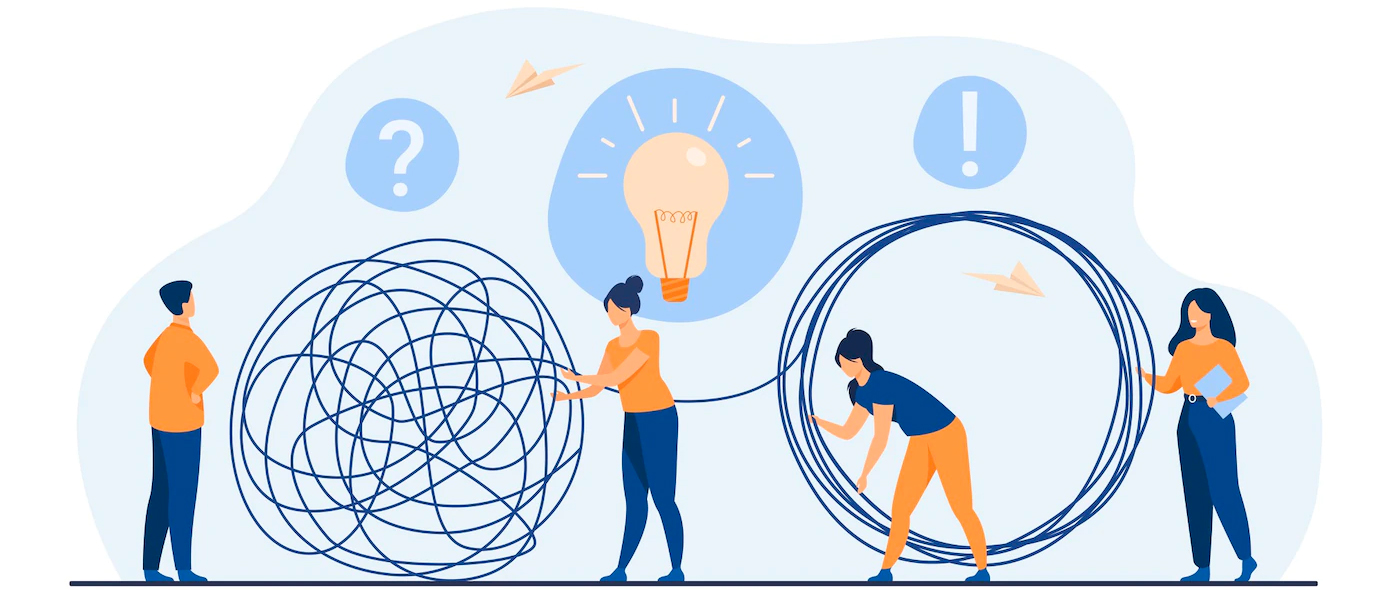School difficulties, through learning and/or behavioral disorders, are today at the center of numerous concerns and public reflections because they constitute a real challenge to be overcome, both by students and by parents and teachers. teachers.
The testimony of a school teacher trained in the strategic systemic approach
“Some may consider that they are not educators but purveyors of knowledge, others that they are not psychotherapists. Neither is needed to help struggling students. It is in the interactional processes that we can find answers. »
Michel Vidal and Teresa Garcia-Rivera, Palo Alto at school (2013, p. 181)
In my role, I have often felt responsible for the well-being of my students and that of parents towards the school. As the years passed, I gradually had the feeling that my students in difficulty often required more than educational help. However, my role as a teacher did not allow me to provide the appropriate psychological support to these students. I persisted, but the more I persisted in trying to do what I was used to doing, the more helpless I felt in the face of their difficulties. I asked myself: was providing psychological support to my students really my role? Did I have the tools to do it? After ending my teaching duties and having completed the Relationship Clinician training at LACT , I now know how indirect therapy, in a systemic and strategic approach , can help students with academic difficulties and this from Kindergarten.

The systemic and strategic approach
The fundamental idea of a systemic approach is to consider that it is not the person who is the problem but rather an interactional system that is dysfunctional and that we must try to understand. Brief strategic therapy offers a constructivist perspective by viewing problems as dysfunctional systems of perception of reality and therefore of reaction. The idea is therefore no longer to seek a “why” but a “how”; we are no longer looking for the causes but for the solutions.
The strategic approach is based on the idea that the solution attempted to solve the problem becomes the problem. Despite the best intentions, we tend to repeat more and more of the same thing to get out of a problematic vicious circle. The more we repeat these attempts at solutions, the more we maintain, or even aggravate, the problem. As Claude de Scorraille, Olivier Brosseau and Grégoire Vitry remind us in When work hurts (2017, p. 68), the concept of attempted solution is key in the approach: “Attempted solutions basically represent the person's resources. It is the inadequacy of these “usual” resources to certain difficulties which creates an incapacity and causes a problem to appear. They then represent the operational capacities which participate in maintaining the problem. The therapist intervenes by blocking the attempts at redundant solutions in order to allow the patient to consider the problem according to a new logic, thus taking him out of the vicious circle in which he has locked himself. The strategy used will make it possible to apprehend the problem from a different angle and to bring the patient, through reframing, observations, actions to be taken, to live a corrective emotional experience thus allowing him to move towards his objective, towards the resolution of problem.
Why is the systemic and strategic approach relevant in an intervention in the school environment?
An intervention centered on the present
The intervention will approach the problematic situation in its current characteristics, thus leaving aside the events linked to the past.
A solution-oriented intervention
The intervention focuses above all on change with a SMART objective (explained below) co-constructed with the patient.
A non-normative and non-pathologizing intervention
By focusing on the interactional processes, the intervention focuses on the how and not on the why, thus avoiding the search for a “culprit” and making it possible to move towards an adequate solution for each point of view.
An interactional intervention
By focusing on the way the person interacts with his environment and how he reacts to it, the intervention makes it possible to define the problem in an interactional logic.
A strategic intervention
In order to alleviate the suffering caused by the problem, the intervention focuses on identifying attempts at redundant solutions in order to stop them.
An intervention that respects the ecosystem
The approach identifies and respects the side effects of change for everyone involved in the interactional process.

The problem solving process
The stages of the problem-solving process are explained in the book Vaincre sans combat as such:
A clear definition of the problem here and now
In this context, here are the questions to guide the therapist towards a definition of the problem:
- What is the problem
- Who is concerned ?
- When does it take place?
- How does it work ?
Identifying failed solution attempts
Since there is a circular causality between our attempts to solve the problem and the resolution of the problem, the therapist will therefore help the patient to identify his attempts at solutions and to stop them. By answering the question "how to make the problem worse?" the patient wonders about his dysfunctional behavior. Conversely, the identification of exceptions guides the patient towards a solution-oriented approach by allowing him to identify functional behaviors. If the patient does not identify any exceptions, then the therapist will work to create the exception with the technique of "What would you do differently if your situation were different?" » then do « as if ».
A clear definition of the objective to be achieved
It is essential to co-construct a SMART objective with the patient
- Specific: the objective is personalized
- Measurable: the objective must be quantified or qualified
- Acceptable: the objective must be shared by all (watch out for side effects that could cause resistance)
- Realistic: the goal must be achievable
- Temporally defined: the objective must be limited in time.
Formulation and step-by-step implementation of a plan for change
This action plan is rigorous but flexible in order to authorize modifications and corrections. The role of the systemic and strategic therapist is therefore to study the problem in the "here and now" to have an operational knowledge of the functioning of the problem. While co-constructing a SMART goal with the patient, the therapist will implement an action plan. He will nevertheless have to remain vigilant to the resistance to change on the part of the patient. The advantage of focusing on “how the problem works” makes the approach non-guilt-inducing, thus allowing some resistance to be removed. The therapist will thus be able to introduce a change of perspective, focus on stopping attempts at redundant solutions and thus put in place new interactional strategies in the hitherto dysfunctional system.
As Chiara Curonici and Patricia McCulloch remind us in their book Psychologists and Teachers - Systemic Perspectives on School Difficulties (2007), if the teacher says there is a problem at school, it is because there is has a problem at school: an interactional dysfunction is happening in the school-student system. It is therefore essential to first understand what is happening here and now in this system, and not what is happening elsewhere, especially at home, nor what was happening before. And if there is a problem at school, there is a solution at school.

Difficulties in school
In the school context, the problems most frequently encountered by students are:
- performance decline,
- behavioral problems,
- hyperactivity,
- non-compliance with the rules,
- shyness,
- isolation,
- anxiety, stress.
In general and regardless of the nature of the problem, an alarm will first go off on the teacher's side who will try to solve the problem, then, in a second step, call the parents. However, as we mentioned above, both the teacher and the parents will set up solution attempts to solve the problem. If these become redundant and inefficient, they risk maintaining or even increasing the problem.
The most frequent attempts at solutions implemented in these circumstances are: reasoning, explaining, rewarding, punishing, looking for the causes and all intermittent behaviors, i.e. an alternation of an attempt at a solution and the other. The attempted solution may sometimes be to take the child to a psychologist to change his behavior and correct it; this strategy risks labeling the child in his disorder and thus becoming pathologizing. It is important to spot failing solution attempts, interrupt them, and apply specific strategies to the problem at hand.
In the feedback loop , the student problems listed above will of course have an impact on the teacher. As Chiara Curonici and Patricia McCulloch explain in their article "The systemic approach in the school environment: reflections 20 years later", the teacher can face one of two categories of difficulties: dysfunctional complementarity (also called the paradox of ) and symmetrical wrestling . Each scenario is characterized by the repetition of dysfunctional interactions between the teacher and one or more students, between the students or between the teacher and the parents. This system, teacher-student or teacher-parents, finds itself in a loop of dysfunctional interactions which becomes a veritable vicious interactional circle. It is “useful to seek out and highlight these redundant interactions which contribute to the persistence or even the amplification of a problem in class, because teachers are very sensitive to them. Identifying “always more of the same” often constitutes a reframing that completely changes the teacher's way of understanding or feeling the situation. This “rereading” of the situation functions as a springboard for the search for new ways of doing things. (Curonici, McCulloch, 2004, p. 582).
If there is a problem at school, there is a solution at school.
It is a question of having a first reflection with the teacher who is directly concerned.
- It is necessary to create a bond of collaboration by doing a systematic research with the teacher on the basis of his observations.
- It is then a question of defining the problem by looking for the facts, that is to say the problematic manifestations.
- Then it is necessary to define the request for the desired change and the deadline within which a first small change must take place.
- It is then necessary to define a contract of collaboration by clearly specifying the role of each with a precise mention on the fact that the speaker will in no case replace the teacher.
- In this case, it becomes possible to carry out a reframing by reformulating the problem in systemic and interactional terms.
- It is then necessary to define an intervention strategy which can be broken down into an observation task or an active task with a different behavior prescription.
The prescription of a task
Prescribing a task to be performed in class aims to experiment with another mode of interaction. The teacher will thus be able to experience a new operational situation and experiment with new methods of communication. This 180° task of his attempt at solutions may seem paradoxical to the teacher, but it will block his attempt at a solution and then gradually move towards solving the problem. This is an indirect approach, with the objective of modifying the student's behavior, which will place the teacher in the position of co-therapist and thus facilitate the path towards problem solving.
Indirect therapy
The implementation of an indirect therapy with young children and pre-adolescents through the teacher will therefore be preferred in the school environment. Until pre-adolescence, the emotional maturity of the child is generally not sufficiently developed. Also, the child may not be aware of the problem. However, as children grow and mature, then direct therapy may be used.
This indirect approach will give the teacher a role of co-therapist. It will therefore be essential to take care of communication and the relationship in order to avoid resistance to change and to create a therapeutic alliance.

Conclusion
The systemic and strategic approach, with the theories on which it is based, such as systems theory, cybernetics, the pragmatics of communication and the creation of various realities, makes it possible to analyze problems in terms of interactional processes within a system. This approach sheds light on school difficulties, by placing the child at the heart of the systems in which he interacts, and in particular the class system. The systemic approach, by focusing on the dysfunctional interactions within the class system, makes it possible to bring another perspective and solutions to the difficulties in the school environment from kindergarten.
The main thing here is of course to help the teacher to help his student in difficulty by focusing, not on a problem, but on the dysfunctional interactions which contribute to maintaining and/or aggravating the problem. “It is the teacher who will be the main agent of change, relying on his own skills and those of other members of the system. (Curonici and McCulloch, 2007, p. 160). G. Nardone and C. Portelli in Knowledge through Change, recall that learning to know a problem through change is the only way to develop effective techniques to provide help to those who need it. However, the following question can quickly arise: if the systemic approach is so effective in dealing with school difficulties, why is its use not more popular in the school environment? To answer this question, it is essential to question clientelization. In this regard, Michel Vidal and Teresa Garcia-Rivera mention the importance of properly targeting the customer, that is to say the person who is in difficulty because they cannot find solutions to their problem, that of best helping the student in difficulty. It is therefore with the teacher that it is a question of working and not with the person who is only designated as the carrier of the symptoms, that is to say the student who has behavioral problems. Nor is it a question of working with the parents who, following a vague and linear reading of the problem, are often questioned by the teachers and thus made to feel guilty. Unfortunately, when a difficulty arises in the school environment, the parents, too often questioned by the teacher, become the applicants for help. However, as mentioned earlier, when a problem arises at school, it is in school that the solution is found. In this case, can parents really be clients of this therapy? Also, the child is often too young, immature, or unaware of the problem to be a therapy client. The real client is therefore the teacher.
The teacher, with the help of the therapist, will be able to identify the problem as a dysfunction in the interaction. Moreover, through the indirect approach initiated by the therapist, the teacher will be able to bring about the necessary change by breaking out of this vicious circle. However, the institutional framework of National Education does not allow the teacher such an approach or only allows it on a personal basis. No budget for therapeutic follow-up, no human resources personnel trained in systems! How many teachers go, on a personal basis, to find a systemic therapist to help them better cope with school difficulties? I cannot answer this question. I can nevertheless end with a suggestion that could certainly solve many difficulties in the school environment: why not train teachers in systems thinking?
As Curonici C. and McCulloch P. rightly point out, “the use of the systemic approach in school is not intended to transform teachers into therapists, but to enable them to become better teachers. For my part, I might still be a teacher if I had had the opportunity to train in systemic thinking within the National Education...
References
CURONICI C. and McCULLOCH P. (2004). The systemic approach in the school environment:
reflections 20 years later. Geneva, Cairn info
CURONICI C. and McCULLOCH P. (2007). Psychologists and teachers – Regards
systems on school difficulties. Brussels, De boeck
DE SCORAILLE C., BROSSEAU O., VITRY G. (2017). When work hurts.
Malakoff. InterEditions
LUISIER M. (2010). Systemic approach in the school environment. A model for understanding
tools to act. Lausanne. hey
NARDONE G., BALBI E. (2012). Sail the sea unbeknownst to the sky. Brussels, Satas
NARDONE G., PORTELLI C. (2012). Knowledge through change. Brussels, Satas
PAPANTUONO M., PORTELLI C., GIBSON P. (2014). Win without Fighting. Paris,
Enrick B. Editions
VIDAL M. and GARCIA-RIVERA T. (2013). Palo Alto at school. Florac, SupAgro Florac
WATZLAWICK, P. (1972). A communication logic. Paris, Edition du Seuil
WATZLAWICK, P. (1988). The invention of reality. Paris, Edition du Seuil
www.psy-therapie-breve.fr/Systeme-ouvert-ferme-et-isole. Types of systems




